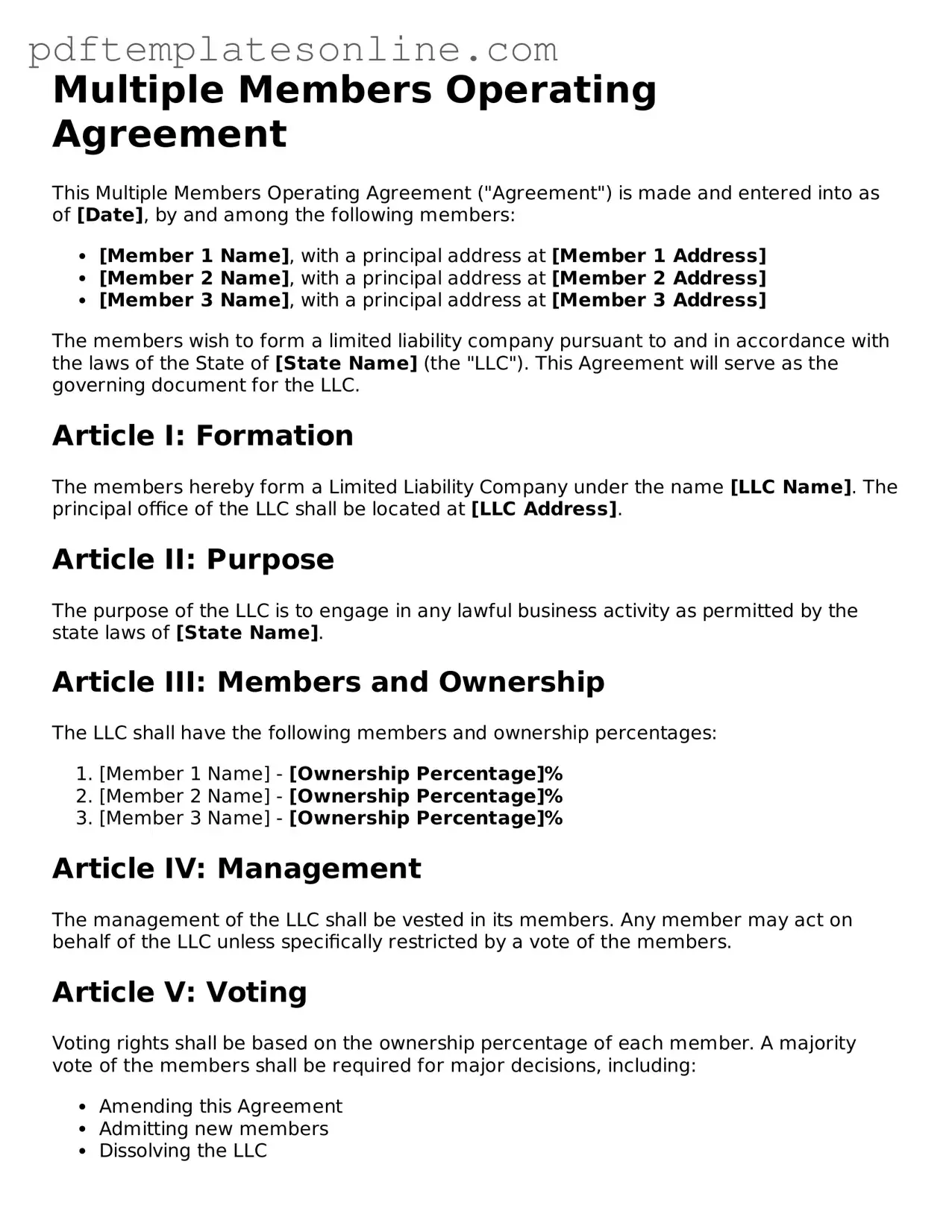Filling out a Multiple Members Operating Agreement can be a complex task. One common mistake people make is failing to clearly define the roles and responsibilities of each member. This lack of clarity can lead to confusion and disputes down the line. Each member should know their specific duties and how they contribute to the overall operation of the business.
Another frequent error involves neglecting to address profit and loss distribution. Members often assume that profits will be divided equally, but this is not always the case. It is essential to specify how profits and losses will be allocated among members. Without this information, misunderstandings may arise, potentially harming relationships and the business itself.
Some individuals overlook the importance of including a buy-sell agreement. This provision is crucial for outlining what happens if a member decides to leave the business or passes away. Without a clear buy-sell agreement, remaining members may face difficulties in managing ownership transitions, which can disrupt operations and create financial uncertainty.
Additionally, many people fail to update the agreement as the business evolves. Changes in membership, business structure, or operational needs require revisions to the agreement. Ignoring this necessity can lead to outdated provisions that no longer reflect the current state of the business, resulting in complications and potential legal issues.
Lastly, a significant mistake is not seeking professional advice. While it may seem tempting to complete the agreement independently, consulting with a legal professional can provide valuable insights. An expert can help identify potential pitfalls and ensure that the agreement complies with relevant laws and regulations. Taking this step can save time, money, and stress in the long run.
